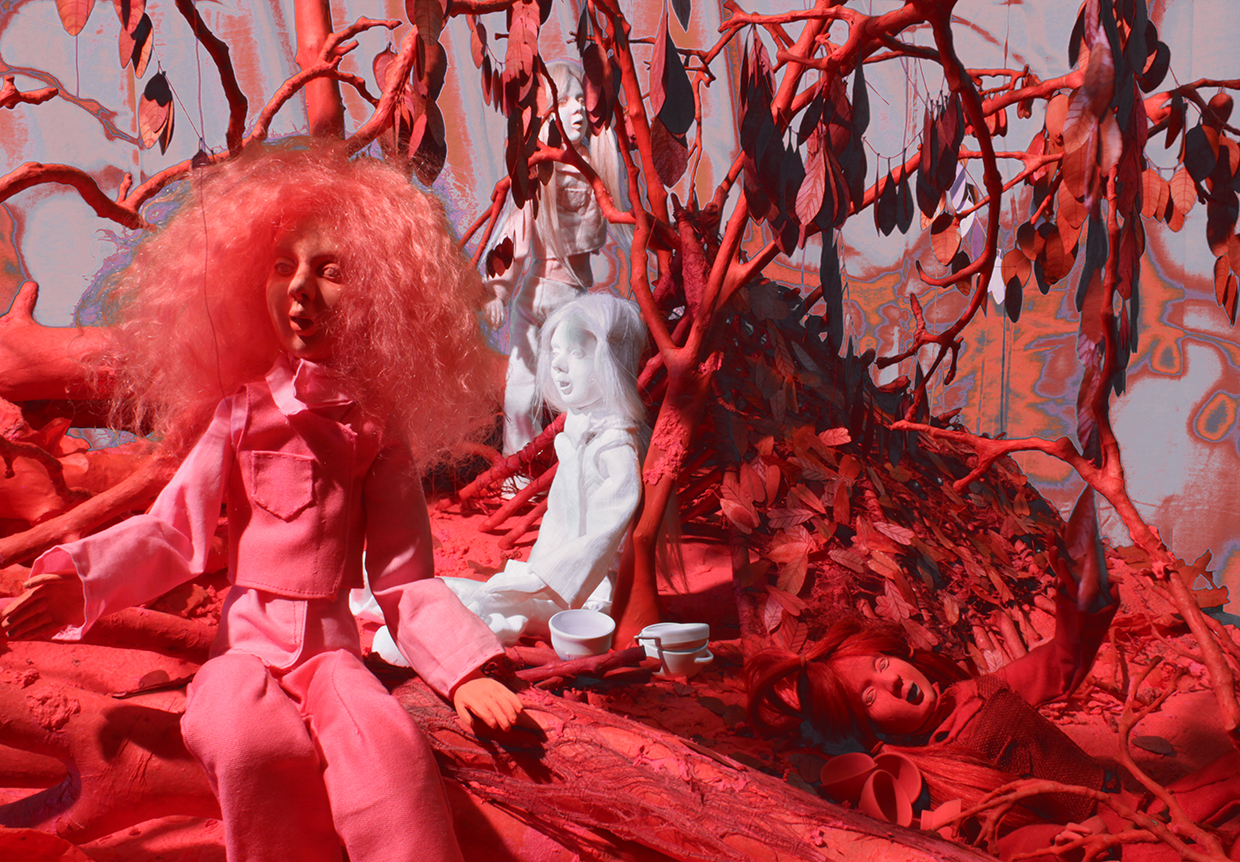
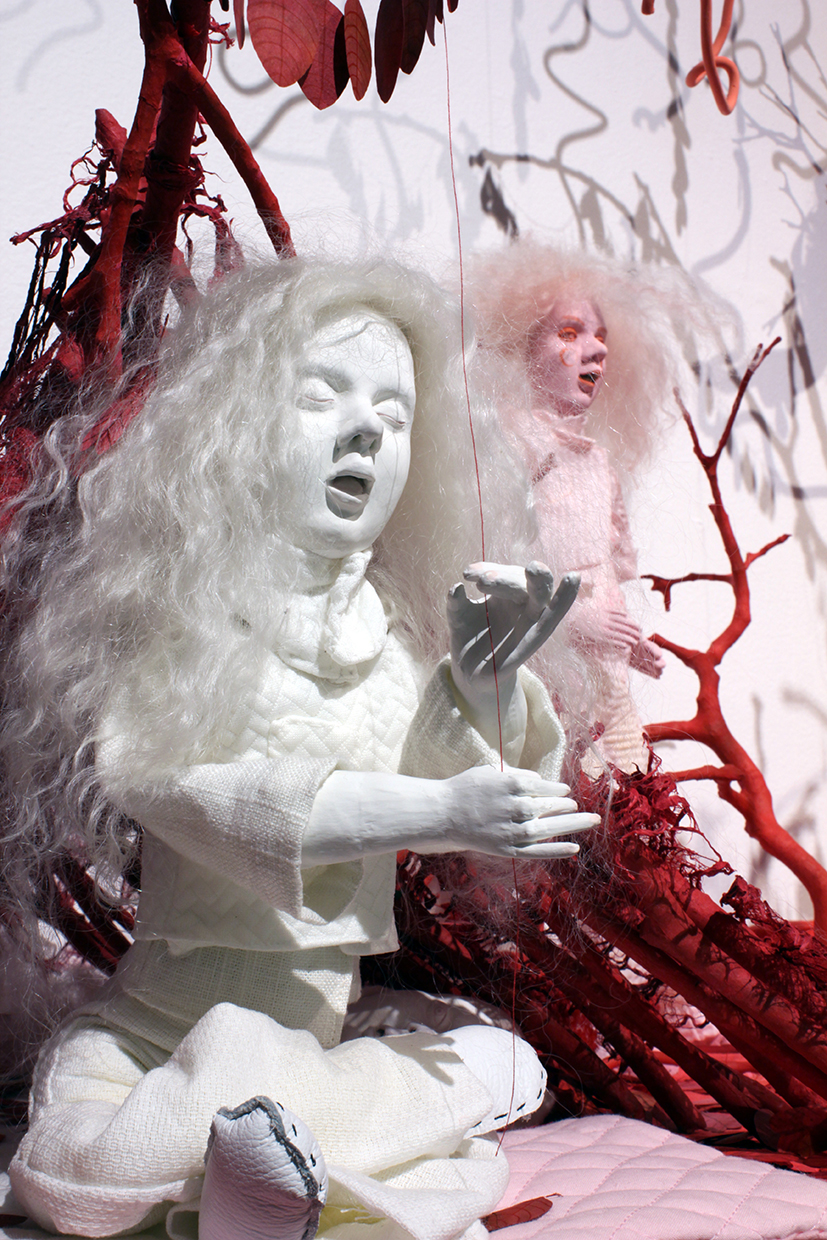
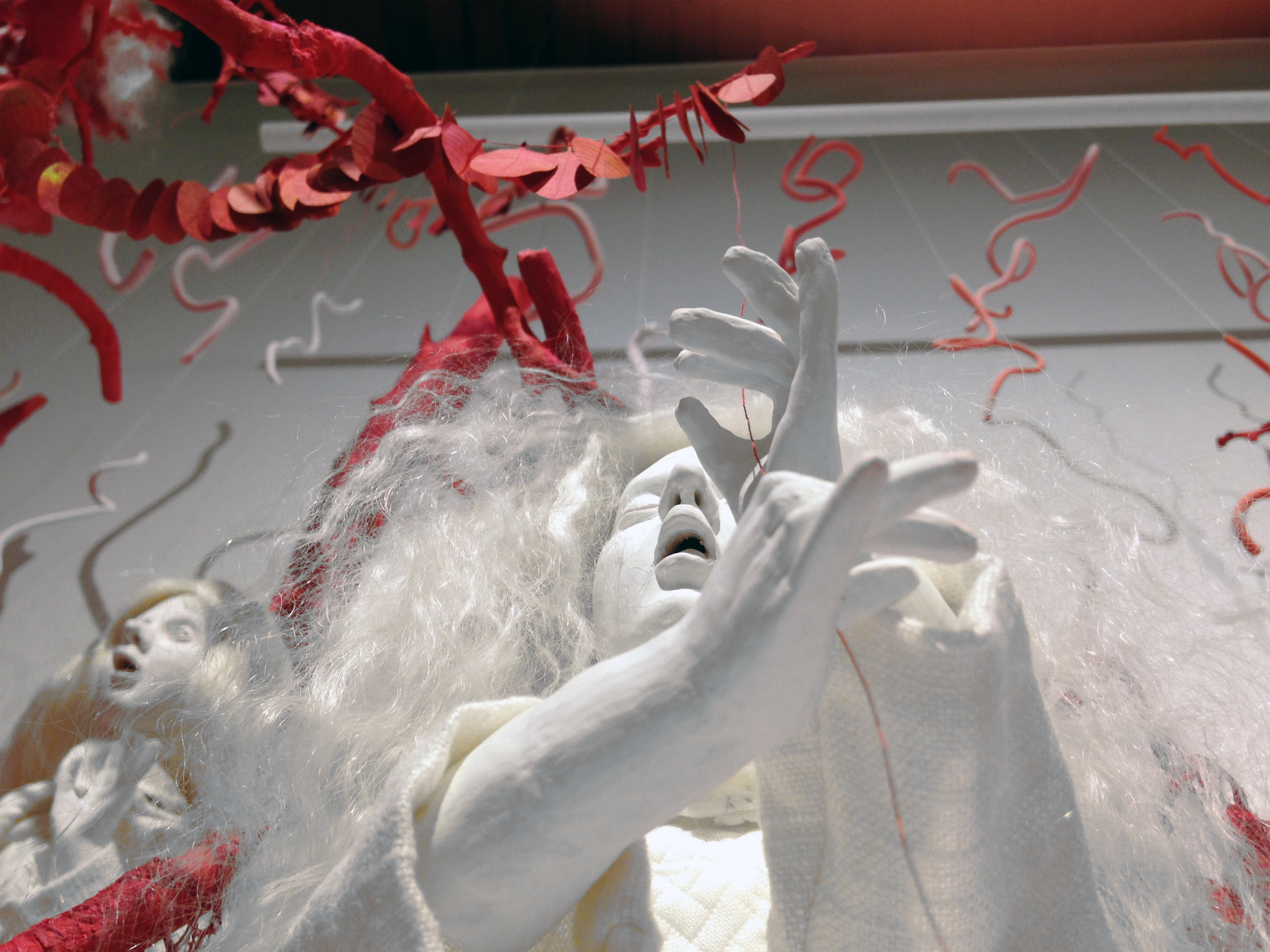
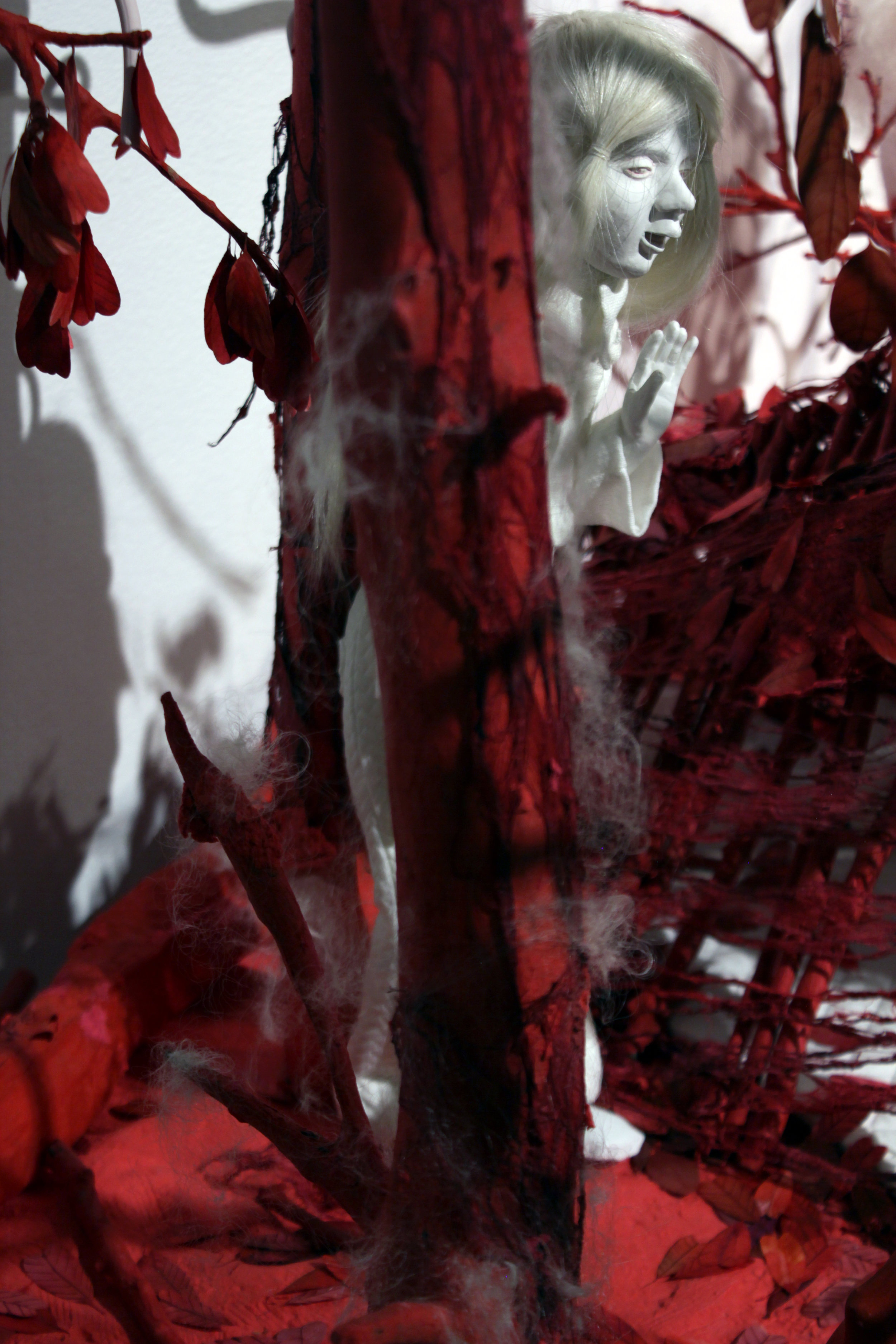

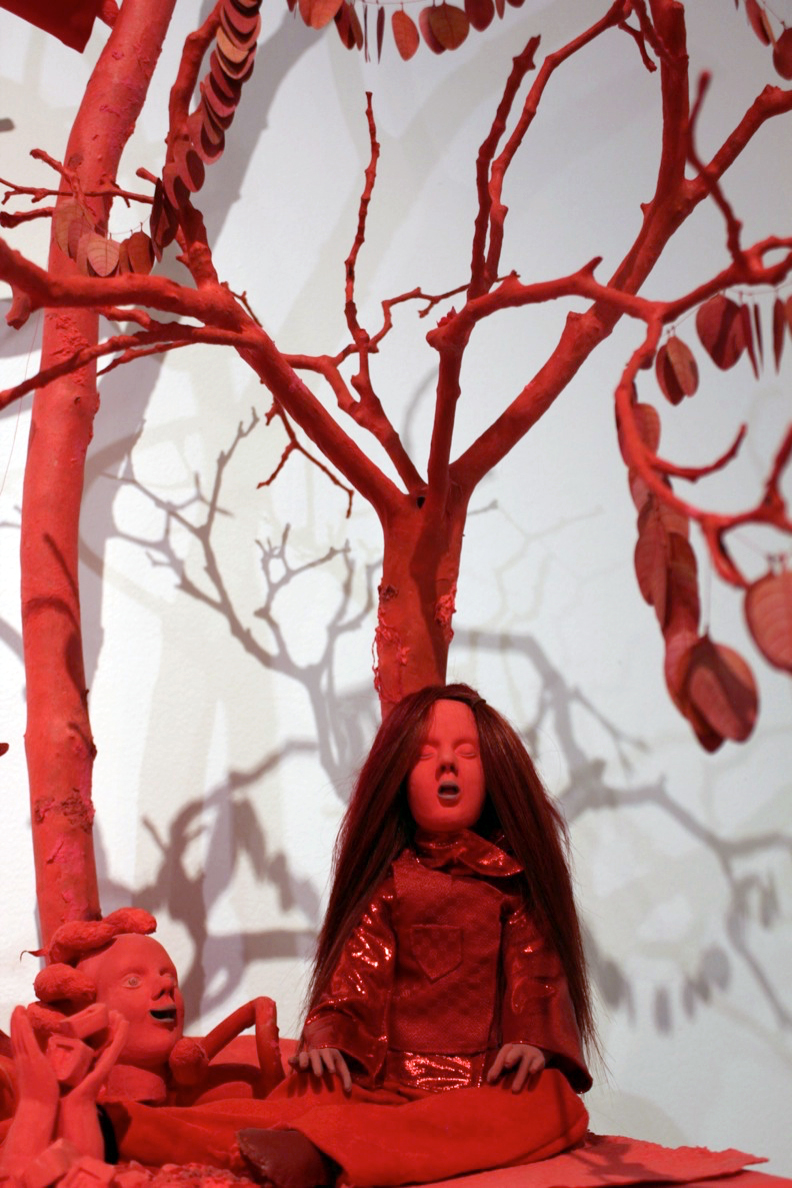
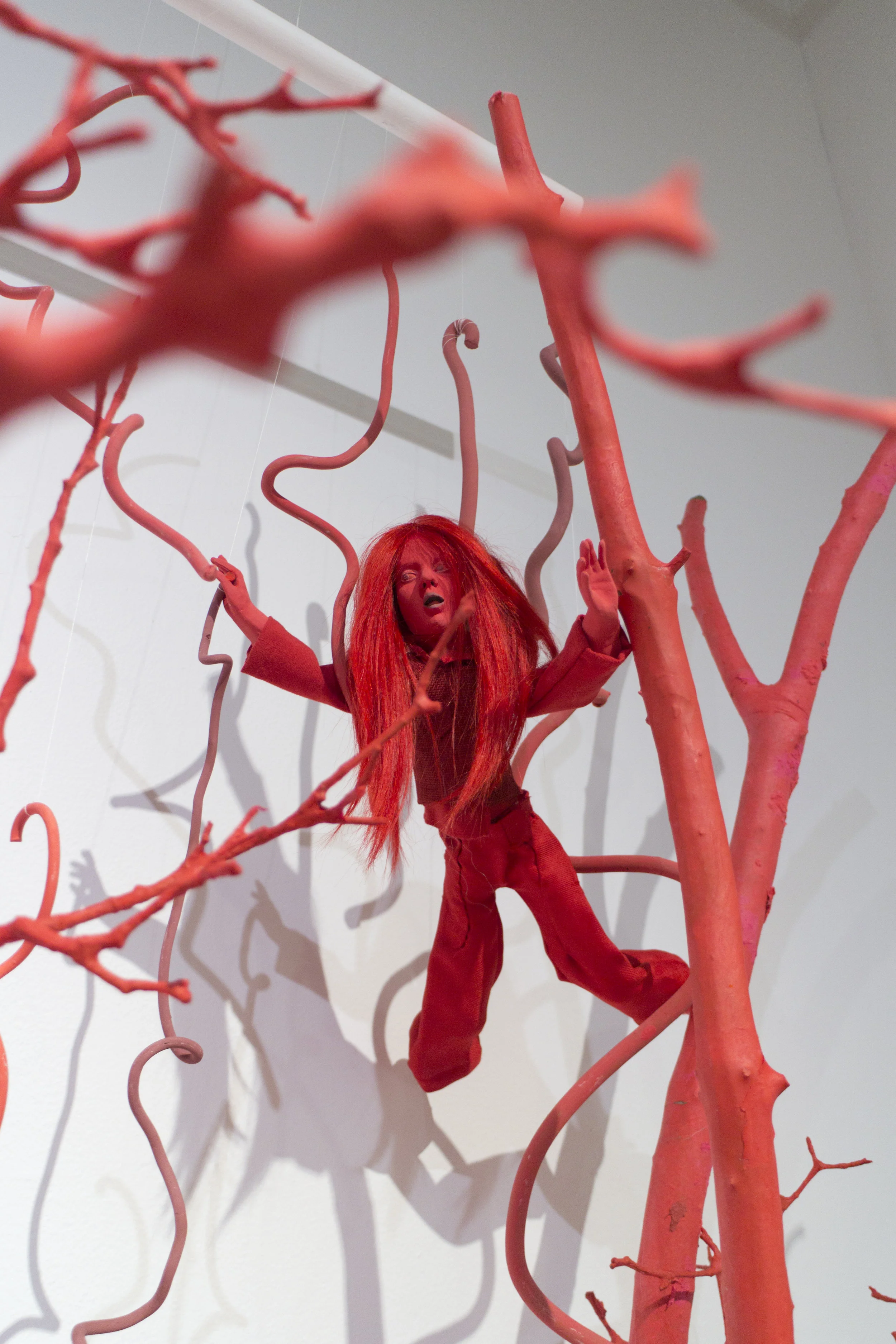
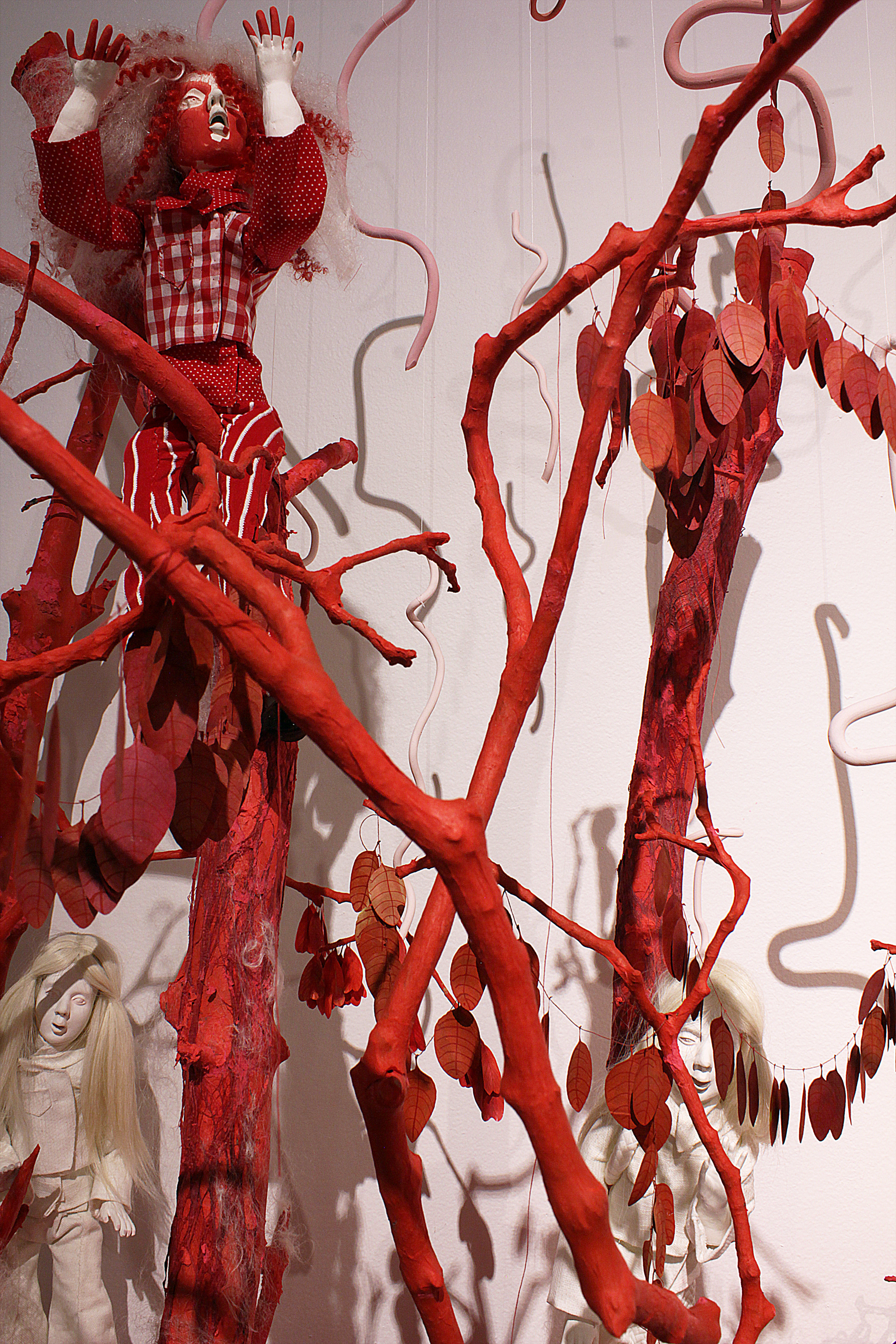



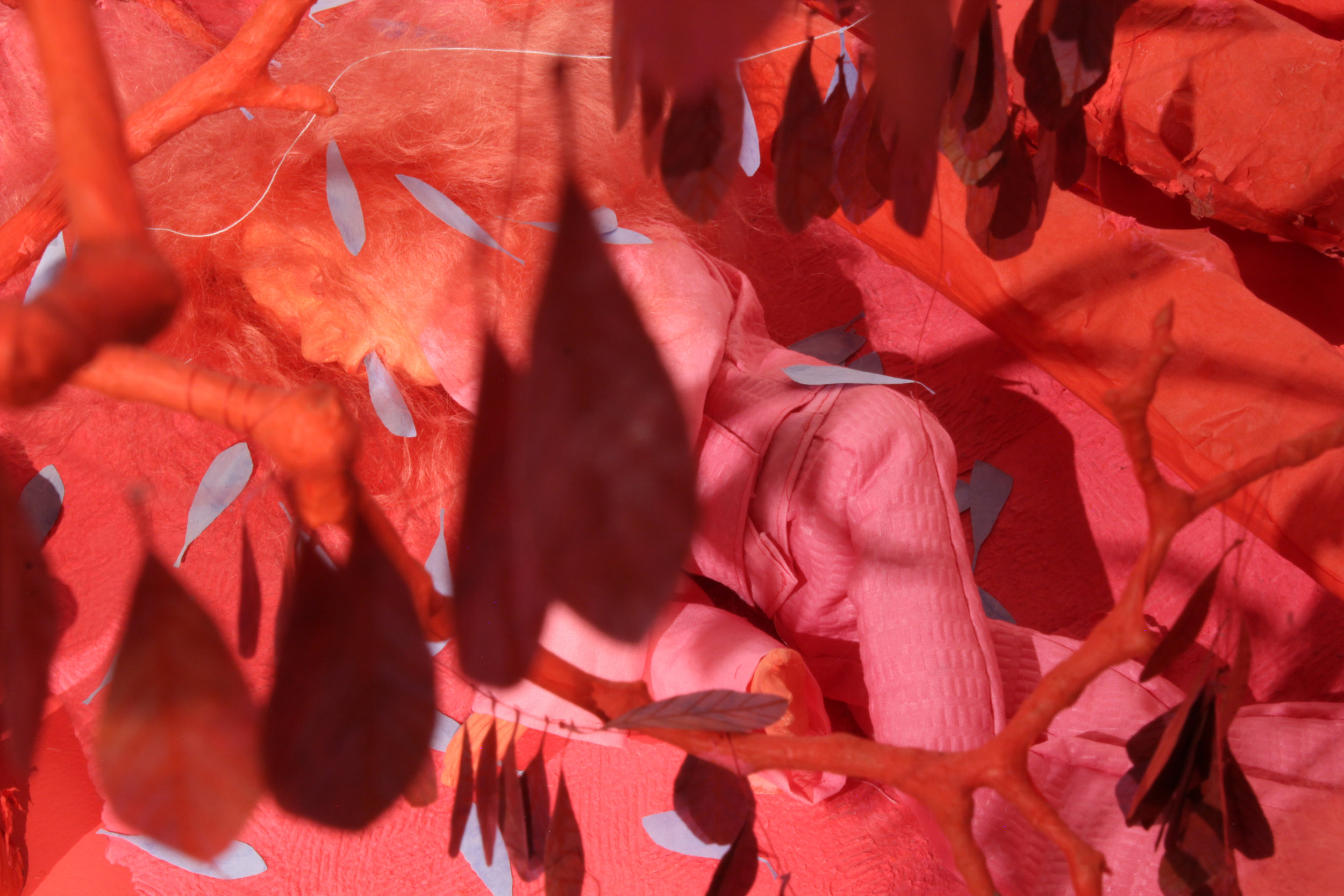

These are images of some of the dozen puppets and various set elements for an ongoing, work-in-progress Red Weather. Most of these are photographs of the installation/ tableau I created at Real Art Ways for my show Metanoia, October 2015 - January 2016.
2016 Statement:
Red Weather is an in-process experimental video project that employs ceramics, fibers, paper-making processes, natural materials/ earthworks, found footage, puppetry, language, performance, and animation to explore the effects of climate change, pollution, and mass extinction on the present “social imaginary” of nature. I use these art/ craft processes to fabricate new elements to animate, and I also generate new ideas for animation from within these primordial material processes. As I make this project I perform and document actions that connect me to lineages of practices and practitioners rooted in deeply exploring the human relationship with the natural world: survivalists, naturalists, environmentalists, contemplatives, artists. I explore these lineages particularly focusing on the spiritual practice of solitary immersion in nature in order to gain insight, in light of our current ecological crises. I wish to make this work as a way of reckoning with the scope of the alienation, losses and challenges, and to illuminate the struggle for environmental justice, and the insights that can be gained by consciously, imaginatively, and collectively confronting problems. I'm currently researching historical and contemporary texts from contemplative and artistic traditions focused on nature-immersion, as well as from science and nature writing and various aspects of the environmental movement.
2019 Statement:
I initially used the color red as a metaphor to embody heat and increased thermal energy. I was also secondarily referencing the energies of the peaceful (White Tara) and wrathful (red, Vajrayogini) deities of the Tantric (Vajrayana) Buddhist tradition in which I’ve been studying and practicing since 2007…. Imagining how my protagonist might draw upon and come to embody these polar energies in confronting the content described above. Additionally, I had also planned to make and animate/film “green” and “blue” iterations of this scenario and play with overlapping the three video projections to create an RGB color-light interplay. However, since my intense investigation of indigenous oppression began in 2016 when I was awakened by the events at Standing Rock, I note that this color always carries social and political implications when applied to bodies and recognize that I am dangerously treading a line, employing a highly racialized signifier. The body color of the oppressor is the racialized “white.” Redface has been used by whites to appropriate and mock native culture. In making this project whole, when and if I am to work on it again, I must address the ongoing existence, oppression, resistance, and resurgence of the “red race.” Indigneous peoples carry ways of knowing integrated with the natural world, as relatives, not conceptualized as separate from nature or in control of nature. In these ways of knowing are many solutions to systemic problems and imbalances created by the white race. Thus, when imaging and animating figures that are white and red and a spectrum of shades in-between I am necessarily engaging in questions of racialized oppression - the historical and ongoing genocide, assimilation, and appropriation of native people - that can not be separated from the above-stated problem of global climate change caused by the colonial-imperialist, industrial-capitalist culture - colored “white.” It might not be feasible for me to complete this project if I come to the conclusion through a process of inquiry and research that the use of a red body signifier, even if employed in a critical exploration of environmental racism, is too problematic and reinforces racism against indigenous people when created by a white artist. Do representations of racial violence necessarily reinforce racial violence, or can they be used successfully by white artists to confront and challenge such violence? Intent and impact do not always coincide, and if the impact is harmful, the approach should be abandoned. If this proves to be the case, this work can be understood - in part - as a tableau of my internalized racism as a white settler, in the process of being recognized, challenged, and creatively confronted.